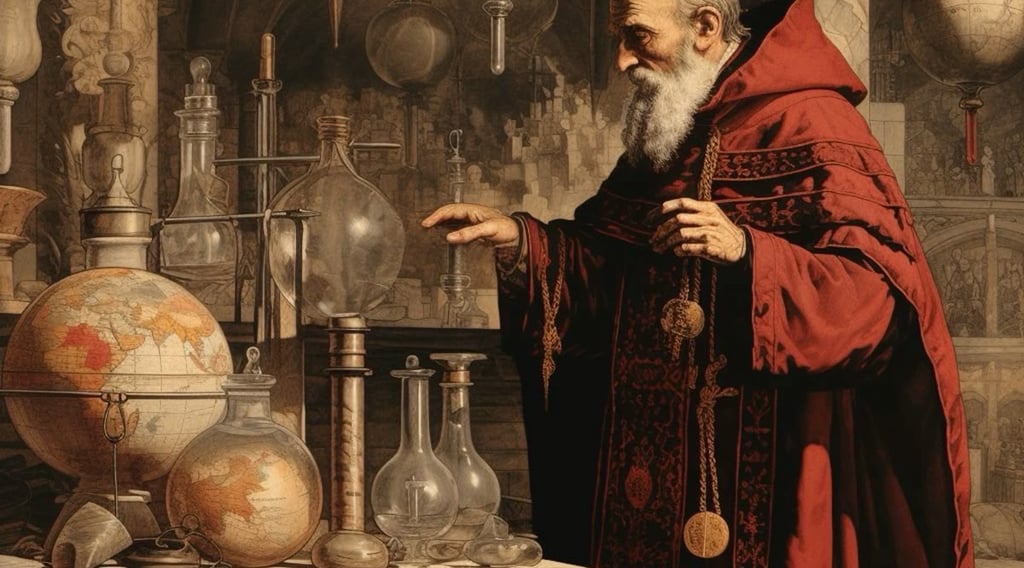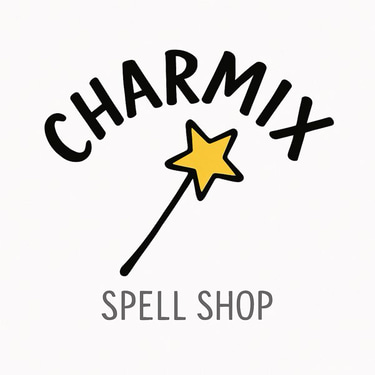Witchcraft at the Intersection of Art and Science
When people hear the word witchcraft, their minds often jump to images of bubbling cauldrons, flying broomsticks, or occult symbols. But in practice, witchcraft is far more nuanced. It’s a living tradition that draws equally from intuition and observation, mystery and method. In many ways, witchcraft exists at the very intersection of art and science.
Lia Zhao
8/22/20253 min read


As a university student studying anthropology, there goes a saying that anthropology is the most scientific of the arts, and the most artistic of the sciences. That is why many universities offer both BA and BS degrees in anthropology. Within this study, I am able to understand and learn about the witchcraft of many cultures, and that is very important to me and my craft. I have come to understand that the many practices within the craft operate as both metaphorical meaning making through solidarity, as well as being backed by scientific evidence. Smoke cleansing not only cleanses the spiritual space, but it also wards away and cleanses potentially harmful bacteria. It is also practiced as a part of ritual, and many turn to this within their self care. The vibrational frequencies of each spell ingredient, which is noted within physics work to generate a desired outcome. Magick in a sense, is science, along with correlations of history and community. It is very interesting to learn about the scientific evidence and backing of Magick, and that is what I want to share with you today.
Witchcraft at the Intersection of Art and Science
When people hear the word witchcraft, their minds often jump to images of bubbling cauldrons, flying broomsticks, or occult symbols. But in practice, witchcraft is far more nuanced. It’s a living tradition that draws equally from intuition and observation, mystery and method. In many ways, witchcraft exists at the very intersection of art and science.
The Science of Witchcraft
Science, at its heart, is about patterns, experimentation, and cause-and-effect. Witchcraft shares that same foundation. Every spell is an experiment:
• Which herbs burn cleanest in a ritual fire?
• How does moonlight influence water left outside overnight?
• What happens if you change the timing of a ritual, or swap rosemary for sage?
These questions mirror the scientific method. Witches observe, test, and adjust. Many magical correspondences — rosemary for cleansing, iron for protection, salt for preservation — come from centuries of lived experience and natural science. Rosemary is antiseptic; iron repels rot and rust; salt inhibits bacteria. Long before lab coats and microscopes, witches were conducting field research.
The Art of Witchcraft
But witchcraft is not only experiment and data. It’s also art — a weaving of story, symbol, and imagination. Where science studies the how, witchcraft also asks the why.
A candle is not just wax and wick; it’s a metaphor, a vessel for intention. The act of stirring a potion counterclockwise doesn’t just agitate liquid — it tells a story of banishing, of unraveling energy. This symbolic layer is what transforms mundane action into magical practice.
Like painting or music, witchcraft involves creativity, intuition, and a personal touch. Two witches may use the same ingredients and rituals but create entirely different experiences, because art is deeply subjective.
Where They Meet
The real magic happens when these two modes of thinking overlap:
• Timing: The phases of the moon, tides, and planetary alignments are both astronomical events and poetic metaphors.
• Herbalism: Plants hold measurable chemical properties while also carrying cultural and symbolic meanings.
• Alchemy: Transformations in matter — fire turning wood to ash, fermentation turning fruit to wine — are physical processes that also serve as metaphors for inner change.
Witchcraft thrives in this liminal space where measurable reality and imaginative meaning support each other.
Why It Matters
Seeing witchcraft as both art and science helps us respect it as a serious practice rather than dismissing it as mere superstition or fantasy. It honors the legacy of witches as herbalists, healers, storytellers, and experimenters.
In a world that often separates logic from creativity, witchcraft insists that both belong together. It’s a reminder that intuition can guide inquiry, and that imagination has power when combined with observation.
✨ Witchcraft is a spell written in two languages: one of science, one of art. To practice it fully is to learn how to speak both.
Magick lives here
Explore potions, spells, and tarot insights.
CONTACT
Join us!
info@charmixmagick.com
+1 236-883-4066
© 2025. All rights reserved.
